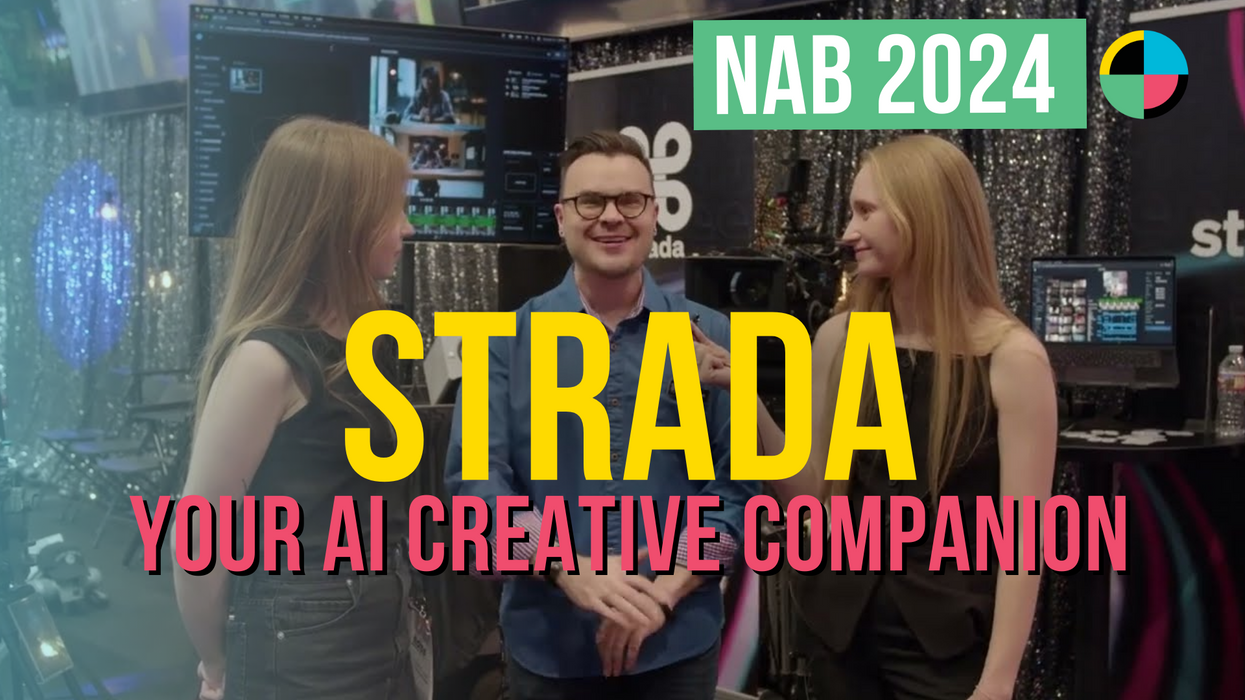Could Artificial Intelligence Help Write Your Next Script? This Creator Thinks So
This app combines AI with screenwriting tools.

This post was written by Matt Firman.
When I was a kid back in the 90s, my dad used to take me and my brothers to the movies all the time. And if we didn’t go, then we’d rent a few from Blockbuster, usually sci-fi because my dad’s a nerd. Now, sci-fi is awesome, but as an independent filmmaker looking back on all those cool movies, I realize that most of those stories show us how bad the future could be, not how good it could be.
That’s because writers have to focus on conflict, since conflict is inherently what interests us the most as viewers. It’s practically ingrained in the writing process. So, that’s probably why a lot of us in and out of the industry are so wary of technology like AI. We let our imaginations get the best of us. I practically do this all the time as a writer/filmmaker myself, because if anything, it’s just really fun to do.
But recently I decided to take a break from making films and partner with my brother to build Story Prism. Our app merges AI with screenwriting tools, so I’ve had a lot of time to think deeply about the relationship between creators and AI. And, out of this experience, I’ve come to realize that although yes, AI will outsource a lot of jobs within our lifetimes, for screenwriters, filmmakers, and those who are flirting with the idea of becoming one, it actually could end up becoming a liberating technology that could radically enhance people’s ability to create stories more effectively.
Let me explain by showing you what we’re doing right now with Story Prism.
What is Story Prism?
There are many challenges in the screenwriting process from knowing how to end your story or even where to begin. Its lack of inherent structure and the infinite number of ways to append words together and form meaning through action and dialogue makes the process elusive and mind-bending, particularly in pre-writing, which is just a fancy way of describing all the mental gymnastics and fleshing out some writers do before they type their first slugline.
It’s a way to plan your stories logically so you don’t get lost in the middle of the screenplay and realize you have to rewrite the entire thing over again because you convinced yourself that it would be better to structure it another way.
It’s frustrating and can sometimes take weeks or even months to get through before you break your story. So, being interested in technology, my brother and I decided to explore some of the possible applications AI can have in helping writers streamline this kind of work because at the end of the day, we’re storytellers, and that’s what excites us the most. We want to write the screenplay and shoot the film, not sit around pondering deep premises and how they can be indirectly woven into plots. We hate sitting around with flashcards, diagrams, plotlines, and character webs as we suspect a lot of creators do.
But what if you made all those flashcards and diagrams communicative and interactive so that they’re not just things you can fill information into, but rather things you can actually use to generate relevant information for your story with the click of a button?
Well? That’s exactly what we did with Story Prism.
How does it work?
Say you’re starting out with a nebulous idea that has so many different possible directions. Of course, you end up writing tons of paragraphs. But then you sit back and wonder for what feels like an eternity, how the hell are you going to take all of this and distill it down into a logline? What we did with Story Prism is present writers with four questions that are commonly used to frame a logline:
- Who is your story about?
- What do they have to do?
- Who or what are they up against?
- What is at stake?
Writers can either fill them out or press a generate button and have an answer automatically pop up. Most of the time it generates answers that are either close to what you want or more interestingly, answers that you never even considered. And the more you answer yourself, the better the automatically generated responses will be for the proceeding questions because it takes your inputs into consideration and tries to develop the most appropriate responses.
So when a writer fills these four answers out, Story Prism can use that information to automatically distill a one-sentence logline for your story. You can also take that logline and generate tons of different premises for it and then experiment with each one by generating ideas that align with that particular premise and logline. This allows new writers to literally see how choices in their stories connect to their premises and it gives everyone at every level an interactive AI bouncing board where related ideas and directions can be thrown to the wall.
Even crazier, you can take the information you added in all the boxes and use that to instantly create a custom-made Q&A chatbot that you can then ask questions about your story and get answers to help you flesh it out further.
This is our Story Foundation application that we’re in the process of building, but we’re also creating other features that we plan to roll out this year, such as a character builder. Just like with Story Foundation, you input the specific pieces that make up a character from weakness to need or if you need some help, Story Prism can generate suggestions for you.
Then when you’re finished, you can use that information to automatically compile a chatbot that mimics the character you designed.
That’s right. You can actually have a conversation with your characters! This is enormously helpful for writers because now they can interact with their own creations and stress test them to see how they would respond in certain situations.
Essentially, these tools utilize AI to give writers an exoskeleton for their mind so that instead of spending months in the prewriting, they’re spending a few weeks or less. And beyond these apps, we plan to build many more tools to help writers with other things like plot-building and beat sheets.
AI will automate a lot of jobs and can be used for a lot of things that are both good and bad, but for writers and filmmakers at all levels, AI won’t be replacing us any time soon if ever, and right now, it can actually help creators become faster and more effective at writing. Taking the time to master your craft will always be crucial, but the speed and the ability to produce a lot of content is also important and the demand for doing it is growing every day. With AI we can give everyone a cutting edge and open up the possibility for more people to tell their stories.
As technology matures, AI will only become more liberating for us because it’ll help us to do bigger things that are harder to achieve, like effective marketing or actually producing a movie. It's obvious technologists in this field are trying to achieve true sentient AI, but right now and in the foreseeable future that’s not likely. Instead, it will probably be a tool like anything else, only instead of simply using it, it will be interactive and communicative in such a way that it becomes a kind of mirror, reflecting back our own thoughts to make them deeper and stronger.
I think if we really start utilizing AI properly in writing and filmmaking we can truly begin to break the barriers to entry because, at the end of the day, there aren’t any actual barriers holding people back. There are only the challenges of mastering the art of producing good content.
And once you mitigate those issues, then the floodgates really begin to open up.
Interested in trying out Story Prism? Sign up for our waiting list and get notified when it’s ready.














